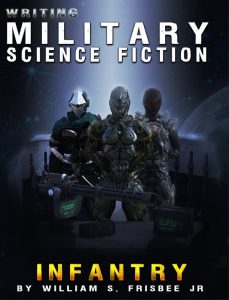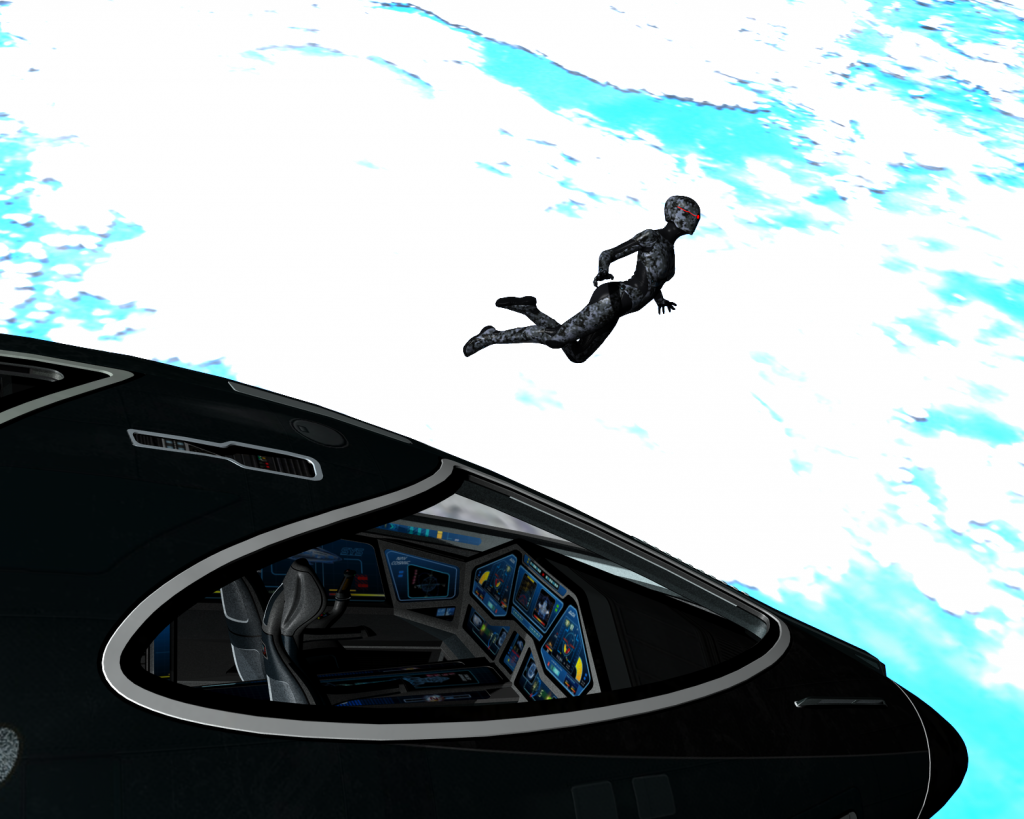
Now Available
This book has over 140K words explaining military life, operations, tactics, techniques, ranks, responsibilities, weapons (including Sci Fi weapons), organization, challenges and so much more.
The printed book will be 20% off during the month of February.
If your book references the military ground forces in any way shape or form then you probably need this book.
Other books in the series I’m working on are Writing Military Science Fiction: Space – which will include a lot of information about space ships, space borne operations, Naval operations and so much more. It will includes lists of weapons, ship types, technologies, sensors and more.
The third books is Writing Military Science Fiction: Squadron – which will be vehicular combat, fighters, tanks, armored personnel carriers, vehicle systems, mechanized cavalry operations, star fighter squadron tactics, battle mechs and more.
To sign up for the mailing list go to http://www.milsf.com/mailing-list/
For an idea of some of the articles and information, check out my website http://www.milsf.com
Thank you and Semper Fi!
Below is the Table of Contents
1 INTRODUCTION 13
1.1 LINKS AND URLS 14
1.2 EVOLUTION OF WARFARE 15
1.3 NATURE OF WAR 18
1.4 LEVELS OF WAR 19
2 THE BIG PICTURE 21
2.1 DIMENSIONS OF WAR 21
2.2 ELEMENTS OF WAR 22
2.3 GENERATIONS OF WAR 23
2.4 STRATEGIC LEVEL 24
2.4.1 WHAT IS STRATEGY 24
2.4.2 TYPES OF WAR 24
2.4.2.1 ATTRITION 25
2.4.2.2 MANEUVER WARFARE 25
2.4.2.3 GUERRILLA WARFARE 26
2.4.2.4 TOTAL WAR 26
2.4.2.5 UNRESTRICTED WAR 27
2.5 OPERATIONAL LEVEL 27
2.5.1 OPERATIONAL 27
2.5.2 PRINCIPLES OF WAR 28
2.5.3 TYPES OF FORCE 30
2.6 TACTICAL LEVEL 31
2.7 INDIVIDUAL LEVEL 31
3 MILITARY ORGANIZATION 32
3.1 UNIT ORGANIZATION 32
3.1.1 CHAIN OF COMMAND 33
3.1.2 DETAILED UNIT ORGANIZATION 34
3.1.3 BUDDY TEAM 38
3.1.4 FIRETEAM 39
3.1.5 SQUAD 41
3.1.6 SECTION 42
3.1.7 PLATOON 42
3.1.8 TROOP 42
3.1.9 COMPANY\TROOP 43
3.1.10 FLIGHT 44
3.1.11 BATTERY 44
3.1.12 BATTALION\COHORT 44
3.1.13 SQUADRON 46
3.1.14 WING 46
3.1.15 MEU 46
3.1.16 MAGTF 46
3.1.17 REGIMENT 47
3.1.18 BRIGADE 48
3.1.19 MEB 48
3.1.20 DIVISION\LEGION 48
3.1.21 MEF 49
3.1.22 CORPS 49
3.1.23 FIELD ARMY 49
3.1.24 ARMY GROUP 50
3.1.25 FRONT 50
3.1.26 LOGISTICS 50
3.1.27 INTELLIGENCE 51
3.1.28 COMMUNICATION 52
3.1.29 ORDERS 55
3.1.30 LINKS 56
3.2 MARINES, ARMY OR NAVY 57
3.2.1 MARINES OR NAVAL INFANTRY 57
3.2.2 ARMY OR LEGION 58
3.2.3 FOREIGN LEGION 58
3.3 DESIGNING ARMED FORCES 58
3.3.1 BOOT CAMP AND TRAINING 63
3.4 SPECIAL OPERATIONS 64
3.4.1 Navy SEALS 64
3.4.2 Navy UDT 64
3.4.3 Army Special Forces 64
3.4.4 Delta Force 65
3.4.5 Army Rangers 65
3.4.6 Marine FAST 65
3.4.7 Marine Raiders\MARSOC 65
3.4.8 Marine Recon 65
3.4.9 PJ’s 65
3.4.10 Spetznas 65
3.4.11 SAS 66
3.5 CO-ED COMBAT UNITS 66
3.6 POLITICAL CONTROL 67
3.6.1 COMMISSAR 67
3.6.2 COMPETING BRANCHES 68
3.6.3 ELITE UNITS 68
3.6.4 SPECIAL GROUPS 68
3.7 RANKS, BILLETS, MOS AND ORGANIZATIONS 68
3.7.1 RANKS OVERVIEW 68
3.7.2 RANKS – ENLISTED 70
3.7.3 RANKS – WARRANT 73
3.7.4 RANKS – OFFICER 74
3.7.5 BILLETS 78
3.7.6 MILITARY OCCUPATIONAL SPECIALTY 81
3.8 UNIT TYPE 83
3.8.1 Light Infantry 83
3.8.2 Medium Infantry 84
3.8.3 Heavy Infantry 84
3.8.4 Field Artillery 84
3.8.5 Mechanized 84
3.8.6 Armored 84
3.8.7 Cavalry 85
3.8.8 Special Forces 85
3.8.9 Air Defense Artillery 85
3.8.10 Signals 85
3.8.11 Paramilitary 85
3.8.12 Unconventional Warfare 85
3.8.13 Guerrilla 86
3.8.14 Reconnaissance 86
3.8.15 Military Police 86
3.8.16 Pathfinders 86
3.8.17 Rangers 86
3.8.18 Scout 86
3.8.19 SWAT 87
3.8.20 Shock Troops 87
3.8.21 Grenadiers 87
3.8.22 Border Guards 87
3.8.23 Guard 87
3.8.24 Counter Terrorist 87
3.8.25 Aviation 87
3.8.26 Quartermaster 88
3.8.27 Engineers 88
3.8.28 Transportation 88
3.8.29 Intelligence (Military) 88
3.8.30 Chemical 88
3.8.31 Adjutant General 88
3.8.32 Chaplain 88
3.8.33 Finance 88
3.8.34 Medical 89
3.8.35 Ordnance 89
3.8.36 Commissar Cadre 89
3.9 LOGISTICS – TOOTH TO TAIL 89
4 TACTICS 90
4.1 INFANTRY 90
4.1.1 THE INVIDUAL 90
4.1.2 WHY INFANTRY? 93
4.1.3 FUTURE OF THE INFANTRY 95
4.1.3.1 Camouflage 96
4.1.3.2 Sensors 96
4.1.3.3 NBC Defense 97
4.1.3.4 Armor 97
4.1.3.5 Battle Suits 98
4.1.3.6 Helmets 99
4.1.3.7 Weapons 100
4.1.3.8 Power Supply 100
4.1.3.9 Size 100
4.1.3.10 Sustainability 100
4.1.3.11 The Individual 101
4.1.4 MARTIAL ARTS 102
4.1.5 SPECIAL UNITS 103
4.1.6 FIREFIGHT DYNAMICS 105
4.2 INFANTRY TACTICS 111
4.2.1 INFANTRY TACTICS – OVERVIEW 111
4.2.2 TACTICS – INDIVIDUAL 112
4.2.2.1 -FIREFIGHT 112
4.2.2.2 NOT GETTING SHOT 114
4.2.2.3 TACTICS – PATROL 116
4.2.3 TACTICS – BATTLE TEAM 118
4.2.3.1 Firefight 118
4.2.3.2 On Patrol 119
4.2.3.3 Silent Sentry Take out 119
4.2.3.4 Defense 120
4.2.4 TACTICS – FIRETEAM 120
4.2.4.1 The Firefight 121
4.2.4.2 On Patrol 121
4.2.4.3 Formations 122
4.2.4.4 The Defense 124
4.2.4.5 Urban Combat 125
4.2.5 TACTICS – SQUAD\SECTION 125
4.2.5.1 Firefight 126
4.2.5.2 Patrol 127
4.2.5.3 The Defense 127
4.2.5.4 Formations 128
4.2.5.5 Urban Combat 128
4.2.5.6 The Future 129
4.2.6 TACTICS – SQUAD REINFORCED 129
4.2.7 TACTICS – SQUAD MECHANIZED 130
4.2.8 TACTICS – PLATOON 131
4.2.8.1 The Firefight 131
4.2.8.2 Platoon Basics 132
4.2.9 TACTICS – COMPANY 134
4.2.10 TACTICS – OFFENSIVE OPERATIONS 135
4.2.11 TACTICS – DEFENSIVE OPERATIONS 139
4.2.12 TACTICS – SNIPERS 141
4.2.12.1 The Future 143
4.2.13 TACTICS – PATROLLING 144
4.2.13.1 RECON 145
4.2.13.2 AMBUSH PATROL 145
4.2.13.3 CONTACT 147
4.2.13.4 ECONOMY OF FORCE 148
4.2.13.5 SECURITY 148
4.2.13.6 SEARCH AND ATTACK 148
4.2.13.7 PLANNING 148
4.2.13.8 ORGANIZATION 149
4.2.13.9 The Future of Patrolling 151
4.2.14 TACTICS -URBAN COMBAT 153
4.2.15 SPECIAL OPERATIONS 155
4.2.16 SPACE ASSAULT 159
4.2.17 TACTICS – RATES OF FIRE 162
4.2.18 RULES OF ENGAGEMENT 165
4.2.19 FORCE MULTIPLIERS 165
4.3 DRILL AND CEREMONY 167
4.4 FORMATIONS 168
5 THE WARRIOR 170
5.1 PSYCHOLOGY AND PHYSIOLOGY 170
5.1.1 ON KILLING 170
5.1.2 FIGHT, FLIGHT, POSTURE OR SUBMIT 171
5.1.3 TO KILL OR NOT TO KILL 172
5.1.4 BATTLE FATIGUE 173
5.1.5 MANIFESTATIONS OF PSYCHIATRIC CASUALTIES 174
5.1.6 COMBAT STRESS 175
5.1.7 PTSD 176
5.1.8 THE CONDITIONS 177
5.1.9 ARROGANCE 177
5.1.10 TECHNOLOGICAL PSYCHOSIS 178
5.1.11 ADRENALINE 178
5.2 DRUGS 179
5.2.1 Drug Types 179
5.2.2 PSYCHIC Drugs 180
5.2.3 Side effects 181
5.3 SLANG 182
5.4 DAY TO DAY 183
5.5 MARCHING 185
5.6 LIMITS OF THE HUMAN BODY 186
5.7 PHYSICAL EXERCISE, MARCHING and CADENCES 187
5.7.1 PHYSICAL FITNESS TEST (PFT) 187
5.7.1.1 USMC FITNESS TEST 187
5.7.1.2 US ARMY FITNESS TEST 188
5.7.1.3 FRENCH FITNESS TEST 188
5.7.1.4 BRITISH ROYAL MARINES FITNESS TEST 188
5.7.1.5 NAVY SEAL PHYSICAL FITNESS TEST 188
5.7.2 CADENCES 189
5.8 DISCIPLINE 189
5.9 PERSONALITIES 190
5.9.1 PETTY TYRANTS 190
5.9.2 LEADER TYPES 190
5.9.3 TRAITS OF A LEADER 191
5.9.4 OTHER PERSONALITY TRAITS 192
5.10 MILITARY ETIQUETTE 193
5.10.1 ARRIVING AT A UNIT 193
5.10.2 CHANGE OF COMMAND 193
5.10.3 BOARDING/DEPARTING A SHIP 194
5.10.4 SALUTING 194
5.10.5 COLORS 195
5.10.6 FORMS OF ADDRESS 196
5.10.7 MILITARY ATTITUDE AND CUSTOMS 196
5.10.8 MILITARY COURTESIES 197
5.11 HURRY UP AND WAIT 198
6 WEAPONS AND TECHNOLOGY 200
6.1 TECHNOLOGIES 200
6.1.1 COMMUNICATION TYPES 200
6.1.1.1 ELECTRONICS – EMP AND HERF 201
6.1.1.2 RADAR 203
6.1.1.3 JAMMING 203
6.1.1.4 BATTLEFIELD COMPUTERS 204
6.1.2 DRONES AND ROBOTS 205
6.1.3 NANOTECHNOLOGY 207
6.1.4 WEAPONRY OVERVIEW 207
6.1.4.1 SMALL ARM CLASSIFICATIONS 209
6.1.4.2 WEAPON TYPES 211
6.1.4.3 WEAPON MUNITIONS 213
6.1.4.4 WEAPON SETTINGS 216
6.1.4.5 WEAPON ENGAGEMENT RANGES 217
6.1.4.5.1 Standard Infantry Ranges 217
6.1.4.5.2 Sniper Engagement Ranges 217
6.1.4.6 WEAPON RANGES 217
6.1.4.7 WEAPON TRICKS 219
6.1.5 SENSORS 220
6.1.6 ARMOR 222
5.1.6.1 ARMOR TYPES 222
6.1.6.1 FORCE FIELDS 223
6.1.6.2 ARMOR ADD ONS 223
6.1.7 CYBERWARFARE 224
6.1.7.1 TEMPEST 225
6.1.7.2 ADMIN HACKING TARGETS 226
6.1.7.3 COMBAT HACKING TARGETS 227
6.1.8 ARTIFICIAL INTELLIGENCE 227
6.1.9 PSIONICS 228
6.1.10 CYBERNETICS 229
6.1.11 BIOTECH 231
6.2 WEAPON SYSTEMS 233
6.2.1 WEAPONS 233
6.2.2 COMBINED ARMS 233
6.2.3 SUPPORTING ARMS 234
6.2.4 DANGER CLOSE 236
6.2.5 MORTARS 236
6.2.5.1 Basic Tactics 238
6.2.5.2 Direct Fire Tactics 239
6.2.5.3 Example Fire Mission: 239
6.2.5.4 The Future of Mortars 240
6.2.6 ROCKET LAUNCHERS 241
6.2.6.1 Armor Kill Teams 242
6.2.6.2 Bunker Busting 243
6.2.7 MACHINE GUNS 243
6.2.7.1 MACHINE GUN TYPES 245
6.2.7.1.1 Submachine Guns and Machine Pistols 245
6.2.7.1.2 Light Machine Guns 245
6.2.7.1.3 Medium Machine Gun 246
6.2.7.1.4 Heavy Machine Guns 246
6.2.7.2 MACHINE GUN TACTICS AND TECHNIQUES 247
6.2.7.2.1 COVERING FIRE 247
6.2.7.2.2 Patrol 247
6.2.7.2.3 Defense 247
6.2.7.2.4 Effects 248
6.2.7.2.5 Night Fire 248
6.2.7.2.6 Manning 248
6.2.7.2.7 Anti-tank 248
6.2.7.2.8 Machine Gun Squads 249
6.2.7.3 MACHINE GUN TERMINOLOGY 249
6.2.8 HAND GRENADES 250
6.2.9 GRENADE LAUNCHERS 252
6.2.9.1 RPG 253
6.2.9.2 Rifle Grenades 254
6.2.9.3 Rifle Grenades type 2 254
6.2.9.4 Rate of Fire 254
6.2.10 MISSILE LAUNCHERS 255
6.3 LISTS 255
6.3.1 MISSION COMPLICATIONS 255
6.3.2 INSERTION/EXTRACTION 257
6.3.3 MISSION TYPES 259
6.3.4 MISSION TARGETS 261
6.3.5 TYPES OF TERRAIN 264
6.3.6 PLANNING THE WAR THEATER 265
6.3.7 STANDARD GEAR 267
7 RECOMMENDED BOOKS 269
8 IN CLOSING 270



